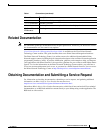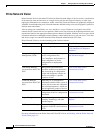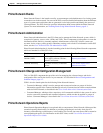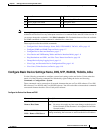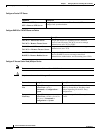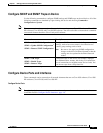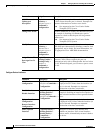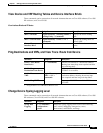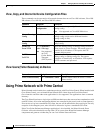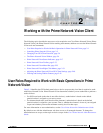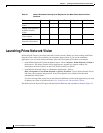
1-7
Cisco Prime Network 4.0 User Guide
OL-29343-01
Chapter 1 Setting Up Devices and Using the GUI Clients
Setting Up Devices and Validating Device Information
Configure SNMP and SNMP Traps on Device
Use the following commands to configure SNMP settings and SNMP traps on the real device. All of the
following commands are launched by right-clicking the device and choosing Commands >
Configuration > System.
Note These commands can be executed on all network elements that run on Cisco IOS software, Cisco IOS
XR software, Cisco NX OS, and Cisco IOS XE software. You will not be able to execute these commands
on network elements that have Cisco Catalyst OS software.
Configure Device Ports and Interfaces
These commands can be executed on all network elements that run on Cisco IOS software, Cisco IOS
XR software, Cisco NX OS, and Cisco IOS XE
Configure Device Ports
Note To apply description or status changes to an interface and port at the same time, use the interface
commands listed in Configure Device Interfaces, page 1-8.
Command Description
SNMP > Add SNMP Configuration
SNMP > Update SNMP Configuration
1
SNMP > Remove SNMP Configuration
1. The “Update SNMP configuration” command is not applicable for Cisco UBR10K and RFGW10 cards.
Configures SNMP on the device, including community
settings, read-write access control, view-based access
control, group settings, and so forth.
Note Be sure to also apply any SNMP configuration
changes to the device in Prime Network so that the
settings are also updated in the Prime Network
model.
SNMP > Add Traps
SNMP > Enable Traps
SNMP > Remove Traps
Configures traps on the device (for example, improper
user authentication, restarts, the closing of a connection,
loss of connection to a neighbor router, and so forth). You
can choose traps from a drop-down list.



